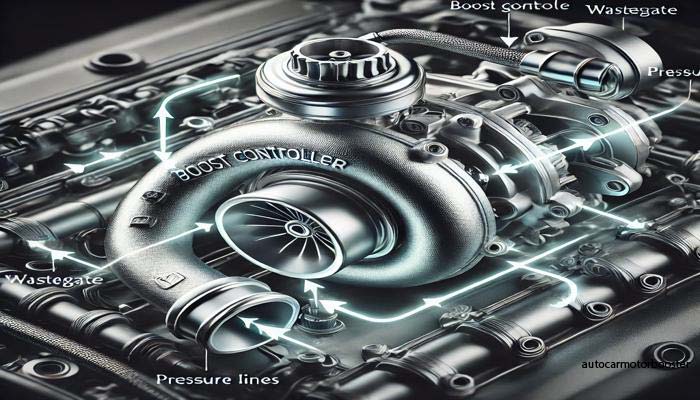
Boost controllers are essential devices in modern turbocharged engines, allowing drivers to manage boost pressure effectively. Understanding how to set and adjust your boost controller can enhance your vehicle’s performance and efficiency. In this article, we will explore the fundamentals of boost controllers, their settings, and how they impact engine performance.
What is a Boost Controller?
A boost controller is a device that regulates the amount of boost produced by a turbocharger. It helps in managing turbo lag and ensures that the engine operates within optimal performance parameters. There are two main types of boost controllers: manual and electronic.
- Manual Boost Controllers: These are simple devices that use a mechanical mechanism to restrict or allow boost pressure. Users can adjust the settings manually by turning a knob or dial.
- Electronic Boost Controllers: These devices offer more advanced features, allowing for precise adjustments via a digital interface. They can also be programmed to adjust boost levels based on various factors, such as RPM and throttle position.
How Boost Controllers Work
Boost controllers manipulate the wastegate, which controls the flow of exhaust gases to the turbocharger. By adjusting the wastegate’s opening, boost controllers can maintain desired boost levels.
- When the wastegate is closed, the turbocharger builds pressure.
- When the desired boost is reached, the wastegate opens, diverting exhaust gases and controlling the boost pressure.
Key Settings for Boost Controllers
1. Base Boost Setting
The base boost setting determines the minimum amount of boost your turbo will produce at low throttle inputs. Setting this correctly is crucial to prevent turbo lag and ensure responsive throttle response.
2. Max Boost Setting
The max boost setting defines the highest boost pressure your engine can achieve. This setting is vital for maximizing performance but must be done cautiously to avoid damaging the engine.
3. Gain Setting
The gain setting controls how quickly the boost reaches the desired level. A higher gain setting will allow the boost to build faster, reducing turbo lag. However, it can also cause overshooting, leading to inconsistent performance.
4. Duty Cycle
The duty cycle setting influences how long the wastegate remains closed. Adjusting this parameter can fine-tune the boost response and stability. A higher duty cycle means the wastegate will remain closed longer, allowing for more boost.
5. Overboost Protection
Many electronic boost controllers include an overboost protection feature. This setting prevents the engine from exceeding safe boost levels, reducing the risk of damage. It is crucial to configure this setting according to your engine’s specifications.
Benefits of Proper Boost Controller Settings
Properly configured boost controller settings offer several benefits:
- Increased Power: Correct settings can significantly boost engine power and torque.
- Improved Throttle Response: Fine-tuning the settings can reduce turbo lag, resulting in quicker acceleration.
- Enhanced Engine Efficiency: By managing boost levels effectively, you can improve fuel efficiency and reduce emissions.
- Engine Protection: Setting limits and protection features can safeguard your engine from potential damage.
Common Mistakes in Boost Controller Settings
- Overboosting: Setting the max boost too high can lead to engine damage. Always refer to your engine’s specifications.
- Neglecting Base Boost: Ignoring the base boost setting can result in turbo lag and poor throttle response.
- Improper Gain Settings: Setting the gain too high can cause overshooting and inconsistent performance.
Conclusion
Understanding and correctly setting your boost controller is essential for optimizing your turbocharged engine’s performance. By following the guidelines in this article, you can achieve a well-balanced setup that maximizes power and efficiency while protecting your engine
FAQs
1. What is the purpose of a boost controller?
A boost controller regulates the amount of boost pressure produced by a turbocharger, enhancing engine performance and efficiency.
2. How do I know the correct max boost setting for my engine?
Refer to your engine’s specifications and consult with a professional tuner to determine the appropriate max boost setting.
3. Can I adjust the settings on my boost controller while driving?
It is not advisable to adjust boost controller settings while driving, as it can be distracting and unsafe. Make adjustments when the vehicle is stationary.
4. What are the risks of setting the boost too high?
Setting the boost too high can lead to engine damage, reduced reliability, and potential failures.
5. How often should I check my boost controller settings?
Regularly check your boost controller settings, especially after modifications to your engine or turbocharger, or whenever you notice performance issues.
If Like This Article Visit Our Website. Collect From Wekiapedia